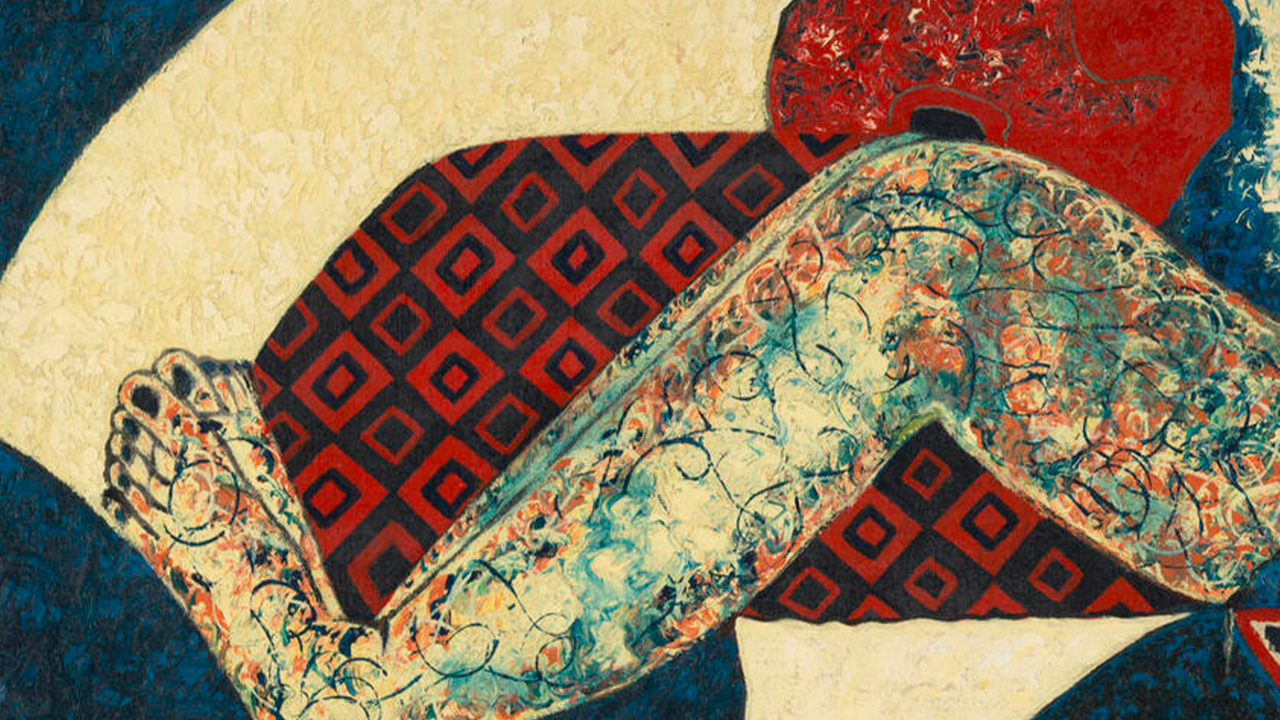Ellen Gallagher
South London Gallery, UK
South London Gallery, UK

The title of Ellen Gallagher’s show at South London Gallery, ‘An Experiment of Unusual Opportunity – Everybody’s Got a Little Light Under the Door’, referred to the Tuksegee experiment which was carried out by the US Public Health Service on 399 black men in the late stages of syphilis for 40 years from 1932. The individuals concerned, mostly illiterate sharecroppers from Alabama, believed they were receiving treatment for ‘bad blood’ and were never told what disease they were suffering from. Instead, as the study required the data collected from their autopsies, the men were deliberately left to degenerate and die. This sinister chapter in American history came alive in one of the new large-scale works on display; an inky blue canvas rippling with shapes that are half recognizable like creatures seen underwater or in a dream. An Experiment of Unusual Opportunity (2008) shifts between abstraction and figuration, the painting’s heavily scored surface flashing with coral and turquoise, offering up a claw, a tentacle, a face or a winking eye. The effect is sensuous and disorientating, inviting extended contemplation, pulling us in. By way of this intense subjectivity, the picture operates in direct contrast to the morally myopic doctors who viewed the patients in their care not as sick people but as clinical material. Hauling these discarded lives into her work, Gallagher attempts to hold on to their ruins, and prevent a drift into formlessness and silence.
‘An Experiment …’ demonstrated the artist’s ongoing interest in lost narratives. In an earlier series 'Watery Ecstatic' (2002–4) for instance, she resurrected Drexciya, a mythical underwater Black Atlantis, populated by sea creatures that were the descendents of drowned slaves. Here again are the characteristically inventive combinations of materials, processes and content; fusions of plasticine and gold leaf, photogravure and collage, George Clinton and Sigmund Freud. Some of Gallagher’s earliest pieces appropriated archival photo journals designed for an African-American readership, and set them into a contemporary framework. Typically this is where the new compositions begin, built up from the concrete fragments of the past: medical reports, advertisements for wigs, or pages lifted from vintage magazines. In O.K. Corral and Puppy Chow (both 2008) thin strips of printed paper create irregular mosaics that function both as the subject and structure of the work. These cut-outs are so full with colour that words are mainly obscured, only occasionally breaking to the surface: ‘Patterns’ reads one; others read ‘$12.88’ or ‘Jim Beam’. More legible passages of writing appear in the two paintings named La Chinoise (2008), which from a distance exude cool geometric minimalism. Upon closer inspection this formality serves to emphasize the urgent emotion conveyed in a description of Sonny Liston’s boxing style, or Félix Éboué’s administration of the French colonies. Emerging from these accounts are ghostly heads with cardboard curls, hovering behind them a sinewy cloud of hair. In this context the mutilated texts become part of a new visual lexicon, their original meanings simultaneously retained and resisted. The works turn into sites, as the artist has explained, of both recovery and loss.
In the centre of the gallery is a series of eight collages entitled ‘Morphia’ (2008–9); each one suspended within a glass vitrine and displayed on a long-limbed table. The forms trapped inside might have come from the more conventionally displayed paintings on the walls, or from Gallagher’s own past – their translucent bodies are reminiscent of the sea butterflies she studied early on in her career. Both sides of the works are decorated; embellished with pencil, layers of PVC, egg tempera, and watercolour. One specimen with numerous antennae gestures ecstatically towards the edge of the frame, its lacy ‘wings’ pierced entirely, letting in fragments of light. Another flaunts newspaper horns from one angle, and quivering eyelashes from the other, its tail fanning out into slivers of print. Like microbes magnified to cartoon proportions these beasts seem otherworldly, but the title suggests they might take shape in the minds of those who are hallucinating or asleep. Beyond them on the far wall is the Byzantine gold ground of IGBT (2008), another painting that plays with scale and the idea of a hidden parallel system. Here, the internal workings of a small circuit board are amplified to gigantic size, becoming the setting for two silhouetted figures striking heroic poses at the centre of the canvas. While the portraits conjure up classical cameos, the digital patterns they float across come from modern mythology – the ‘magical’ passage of invisible data. Gallagher’s paintings create dynamic encounters between the historic and the present. The experience of being immersed in their realm calls to mind William Faulkner’s shrewd observation: ‘The past is never dead. It’s not even past.’






















